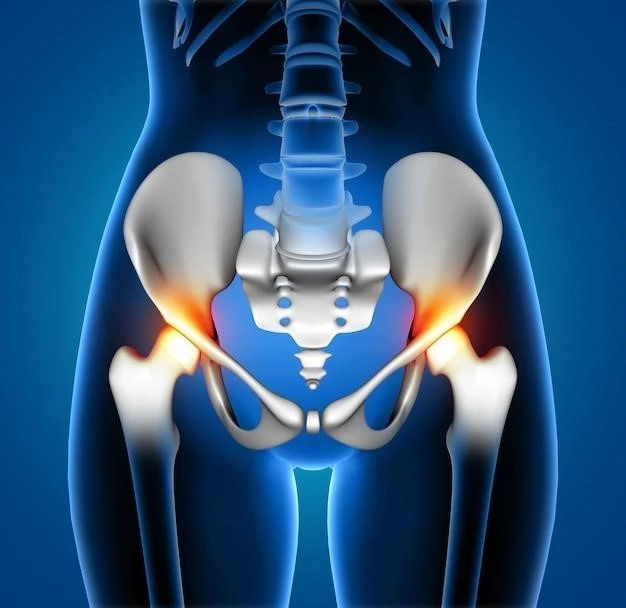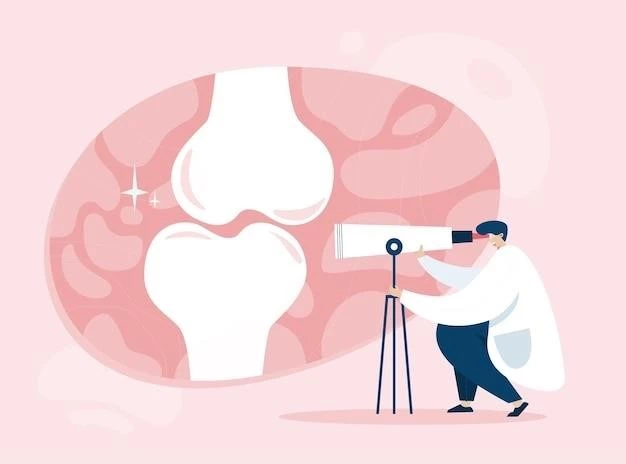Disease ⎻ Hip Dislocation
In the realm of orthopedic surgery, hip dislocation poses a significant challenge requiring precise diagnosis and treatment. Understanding the complexities of this condition is crucial in guiding patients towards successful outcomes.

I. Introduction
Welcome to the comprehensive discourse on the intricacies of hip dislocation, a condition that pertains to the displacement of the femoral head from the acetabulum. This article delves into the multifaceted aspects of hip dislocation, encompassing its anatomical context, root causes, telltale symptoms, diagnostic protocols, varied treatment modalities, the pivotal role of orthopedic surgeons, postoperative rehabilitation strategies, potential complications, the option of hip replacement as a definitive solution, the meticulous recovery journey post-surgery, and the crucial management of pain and swelling. With a focus on evidence-based insights and clinical expertise, this narrative aims to illuminate the path towards informed decision-making for patients grappling with hip dislocation. By elucidating the nuances of this orthopedic challenge, we strive to empower individuals with knowledge that fosters proactive engagement in their healthcare journey.
II. Understanding Hip Anatomy
The hip joint, a pivotal link between the lower limb and the pelvis, comprises the femoral head and the acetabulum, creating a ball-and-socket joint. Surrounded by ligaments and muscles, this joint facilitates a wide range of motion crucial for daily activities. The acetabulum, a concave socket in the pelvis, cradles the rounded femoral head, forming a stable articulation essential for weight-bearing and movement. Understanding the intricate anatomy of the hip is imperative for comprehending the mechanisms underlying hip dislocation and guiding effective treatment strategies tailored to each patient’s unique anatomical considerations.
III. Causes of Hip Dislocation
Hip dislocation can occur due to traumatic events such as motor vehicle accidents or falls, causing sudden impact or force on the hip joint. Sports-related injuries or severe twisting motions can also lead to hip dislocation. Certain medical conditions like congenital hip abnormalities, osteoarthritis, or neuromuscular disorders may predispose individuals to hip dislocation. In some cases, surgical procedures involving the hip region can increase the risk of dislocation. Understanding the diverse etiological factors contributing to hip dislocation is crucial for implementing appropriate preventive measures and tailored treatment interventions.
IV. Symptoms of Hip Dislocation
The hallmark symptoms of hip dislocation encompass severe pain in the hip or groin region, significant swelling, and visible deformity of the hip joint. Patients often experience limited mobility and an inability to bear weight on the affected leg. Additionally, individuals may report numbness or tingling sensations in the lower extremities. It is essential to promptly recognize and address these symptoms as they may indicate a hip dislocation, necessitating immediate medical evaluation and intervention to mitigate further complications and optimize treatment outcomes.
V. Diagnosis
Diagnosing hip dislocation typically involves a thorough physical examination to assess the range of motion, stability, and alignment of the hip joint. Imaging studies such as X-rays, CT scans, or MRI scans are essential to visualize the extent of the dislocation, assess associated fractures or soft tissue damage, and aid in treatment planning. In some cases, additional diagnostic tests like stress tests or arthrograms may be performed to elucidate the severity of the dislocation and guide the selection of appropriate therapeutic interventions. Accurate and prompt diagnosis is paramount in providing timely and effective care for individuals with hip dislocation.
VI. Treatment Options
Treatment options for hip dislocation vary based on the severity of the injury and the presence of associated fractures or soft tissue damage. Non-surgical interventions may include closed reduction techniques, where the orthopedic surgeon manipulates the joint back into position without surgery. Surgical management, such as open reduction and internal fixation, may be necessary in complex dislocations or cases involving fractures. Post-reduction, rehabilitation protocols focusing on restoring mobility, strength, and function through physical therapy play a crucial role in the comprehensive management of hip dislocation. The selection of the most appropriate treatment approach is guided by the individual patient’s clinical presentation and imaging findings, with the goal of achieving optimal outcomes and reducing the risk of long-term complications.
VII. Role of Orthopedic Surgeon
The orthopedic surgeon plays a pivotal role in the management of hip dislocation, providing expertise in the diagnosis, treatment, and postoperative care of patients with this condition. From performing meticulous physical examinations to interpreting diagnostic imaging studies, the orthopedic surgeon carefully evaluates the extent of the dislocation and any associated injuries to develop an individualized treatment plan. Whether utilizing non-surgical techniques like closed reduction or conducting intricate surgical procedures such as open reduction and internal fixation, the surgeon’s precision and skill are instrumental in restoring the structural integrity and function of the hip joint. Collaborating closely with rehabilitation specialists, the orthopedic surgeon oversees the postoperative recovery process, ensuring optimal outcomes and facilitating the patient’s return to an active lifestyle.
VIII. Post-Surgery Rehabilitation
Post-surgery rehabilitation following hip dislocation aims to optimize recovery, restore functionality, and enhance the patient’s quality of life. This comprehensive process typically involves a multidisciplinary approach, including physical therapists who design customized rehabilitation plans tailored to the individual’s needs and surgical outcome. The rehabilitation protocol focuses on improving joint mobility, strengthening surrounding muscles, and re-establishing gait patterns to promote full weight-bearing and functional independence. Emphasizing gradual progression and monitored exercises, rehabilitation facilitates the gradual return to pre-injury activities while minimizing the risk of complications. Patient compliance with the rehabilitative regimen is crucial for achieving long-term success and maximizing the benefits of surgical intervention in hip dislocation cases.
IX. Potential Complications
Although uncommon, hip dislocation can lead to complications that may impact the patient’s recovery and long-term prognosis. Potential complications include avascular necrosis of the femoral head, where inadequate blood supply may cause bone death, resulting in hip joint deterioration. Post-traumatic arthritis can develop due to joint damage sustained during dislocation, leading to chronic pain and stiffness. In cases of associated fractures or ligament injuries, instability or recurrent dislocations may occur. Neurovascular complications, such as nerve or blood vessel damage, are rare but require vigilant monitoring. Prompt recognition of these potential complications, coupled with timely intervention and follow-up care, is essential in mitigating risks and optimizing outcomes for individuals undergoing treatment for hip dislocation.
X. Hip Replacement as a Treatment Option
In cases where hip dislocation results in irreparable damage to the hip joint, hip replacement surgery may be considered as a definitive treatment option. Total hip arthroplasty involves the removal of the damaged femoral head and acetabulum, followed by the implantation of prosthetic components to restore joint function and alleviate pain. This surgical intervention aims to provide long-term relief and improved mobility for patients with severe hip dislocation. The decision to proceed with hip replacement is carefully weighed based on the individual’s age, health status, level of physical activity, and the extent of joint damage. Close collaboration between the orthopedic surgeon, rehabilitation team, and the patient is crucial in ensuring a successful outcome and facilitating a smooth recovery process post-hip replacement surgery.
XI. Recovery Process
The recovery process post-hip dislocation involves a systematic and phased approach to facilitate healing, regain function, and optimize long-term outcomes. Initially, patients may undergo a period of immobilization to allow the hip joint to stabilize and the soft tissues to heal. As mobility improves, physical therapy plays a central role in restoring strength, flexibility, and joint function through targeted exercises and rehabilitation techniques. Gradual progression from assisted weight-bearing to full weight-bearing activities is guided by the healthcare team to prevent complications and ensure safe recovery. Monitoring progress, addressing any residual mobility issues, and achieving functional milestones are key components of the recovery process. Patient education and adherence to postoperative guidelines are essential in promoting a successful recovery journey following hip dislocation.
XII. Managing Pain and Swelling
Effective management of pain and swelling is paramount in the treatment of hip dislocation to improve patient comfort and facilitate the recovery process. Pain control strategies may involve the judicious use of analgesic medications to alleviate discomfort and enhance mobility. Application of cold therapy or ice packs can help reduce swelling and inflammation around the hip joint. Compression bandages or wraps may be utilized to provide external support and minimize edema. Elevating the affected leg can also aid in reducing swelling. Additionally, physical therapy modalities such as gentle massage, heat therapy, or transcutaneous electrical nerve stimulation (TENS) may be employed to alleviate pain and swelling while promoting circulation and tissue healing. A comprehensive pain management plan tailored to the individual’s needs is essential in optimizing postoperative comfort and ensuring a smooth recovery from hip dislocation.
XIII. Conclusion
In conclusion, hip dislocation poses a complex orthopedic challenge that requires a multidisciplinary approach for accurate diagnosis, prompt intervention, and comprehensive rehabilitation. By understanding the anatomical intricacies, etiological factors, symptoms, diagnostic methods, treatment modalities, and potential complications associated with hip dislocation, healthcare professionals can effectively guide patients towards optimal outcomes. The role of the orthopedic surgeon in providing expert care, from diagnosis to postoperative rehabilitation, is instrumental in restoring joint function and enhancing quality of life for individuals affected by hip dislocation. Through diligent monitoring, personalized treatment plans, and patient education, successful recovery from hip dislocation is achievable, emphasizing the importance of collaborative patient-provider efforts in navigating the challenges posed by this orthopedic condition.
